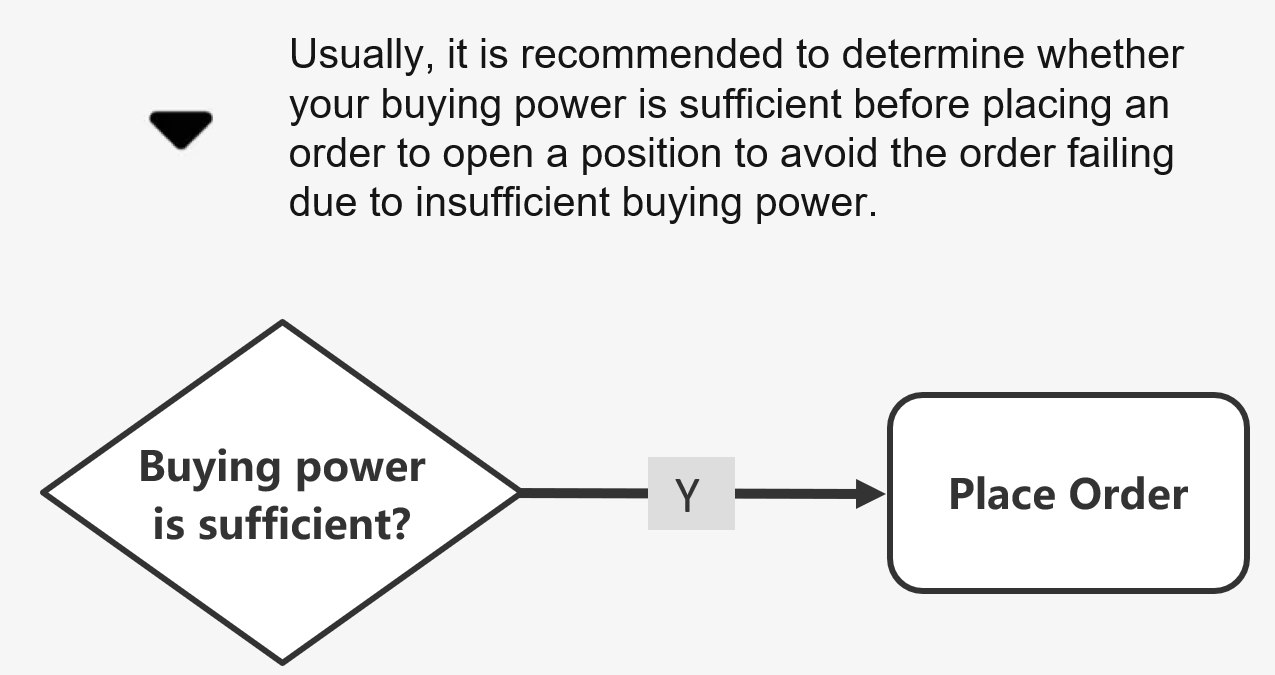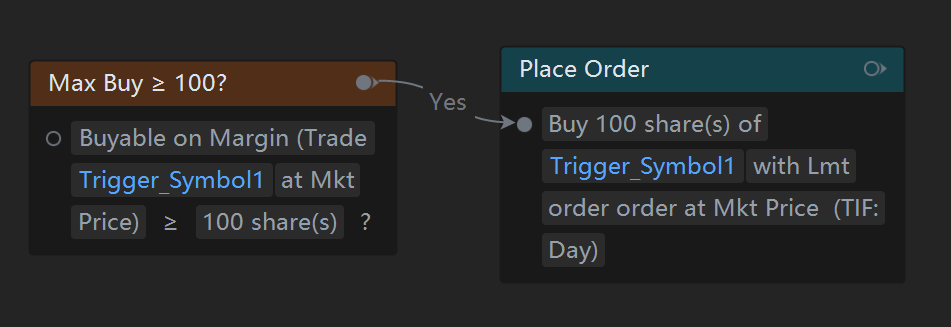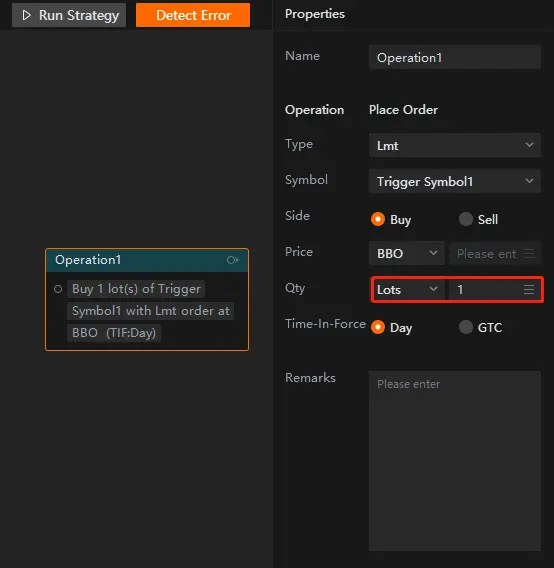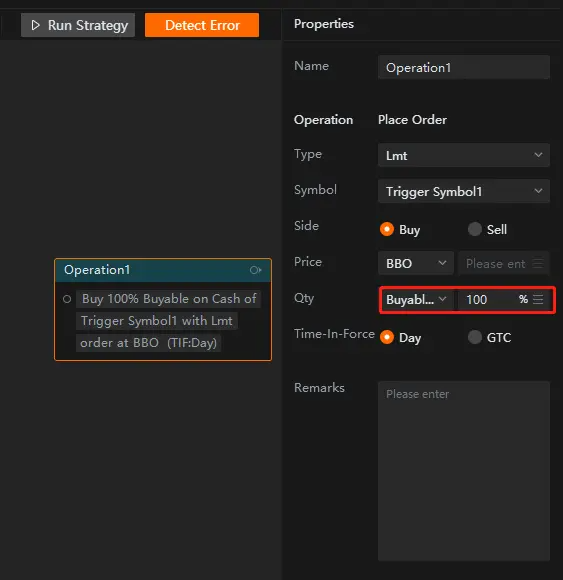How to Open and Close Positions
1. Placing an order to open positions
1.1 Determine buying power before placing an order
Usually, it is recommended to determine whether your buying power is sufficient before placing an order to open a position to avoid the order failing due to insufficient buying power.

There are two situations in which you need to determine your buying power:
● Buyable on Margin
If you want to buy on margin, you can refer to this method: first determine whether the maximum number of shares you can buy on margin is greater than 0; if so, you can directly select "Buyable on Margin" in the quantity parameter box of "Place Order Card" .
It should be noted that, since the maximum number of shares you can buy on margin varies with order types (limit orders and market orders), the order type selected in the "Buyable on Margin" should be consistent with that selected in the "Place Order Card" .

Any images provided are not current and any securities shown are for illustrative purposes only and are not recommendations.
● Buy in a fixed amount
If you want to buy in a fixed amount, you can refer to this method: first determine whether the maximum number of shares you can buy on margin is greater than or equal to 100 shares; if so, you can fill in 100 shares in the quantity box of the "Place Order Card" .

Any images provided are not current and any securities shown are for illustrative purposes only and are not recommendations.
1.2 Placing an order for a fixed number of shares vs for a pro rata number of shares
Scenario 1: Placing an order for a fixed number of shares
If you need to trade a fixed number of shares, just select "Shares" and enter a value in the "Qty" box of the "Place Order Card".

Any images provided are not current and any securities shown are for illustrative purposes only and are not recommendations.
Scenario 2: Placing an order for a pro rata number of shares
If you need to trade a pro rata number of shares (e.g., 100% of available cash), you only need to select "Buyable on Cash" and enter the percentage in the "Qty" box of the "Place Order Card".

Any images provided are not current and any securities shown are for illustrative purposes only and are not recommendations.
2. Close positions
Similarly, it is also recommended to determine whether "Sellable Positions" or "Short Positions" is sufficient before placing an order to close positions to avoid the order failing due to the positions being frozen or other reasons.
Here are two situations in which you need to determine your buying power.
● Sell to close a long position
If you hold a long position and want to sell to close it, you can refer to this method: first determine whether your sellable position is greater than 0; if so, you can directly select "Sellable Positions" in the quantity parameter box of the "Place Order Card".

Any images provided are not current and any securities shown are for illustrative purposes only and are not recommendations.
● Buy to close a short position
On the other hand, if you hold a short position and want to buy to close it, you can refer to this method: first determine whether the number of shares you need to buy back is more than 0; if so, you can directly select "Short Positions" in the quantity parameter box of the "Place Order Card".

Any images provided are not current and any securities shown are for illustrative purposes only and are not recommendations.
This presentation is for informational and educational use only and is not a recommendation or endorsement of any particular investment or investment strategy. Investment information provided in this content is general in nature, strictly for illustrative purposes, and may not be appropriate for all investors. It is provided without respect to individual investors’ financial sophistication, financial situation, investment objectives, investing time horizon, or risk tolerance. You should consider the appropriateness of this information having regard to your relevant personal circumstances before making any investment decisions. Past investment performance does not indicate or guarantee future success. Returns will vary, and all investments carry risks, including loss of principal. Moomoo makes no representation or warranty as to its adequacy, completeness, accuracy or timeliness for any particular purpose of the above content.